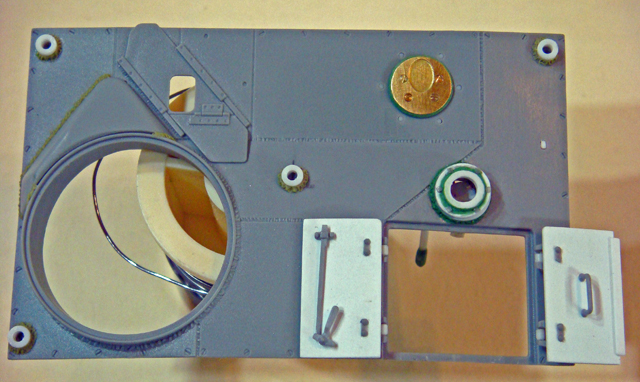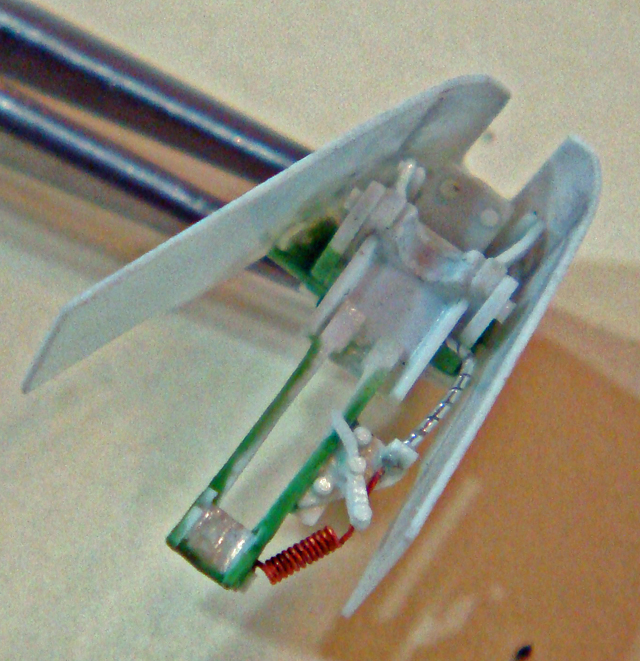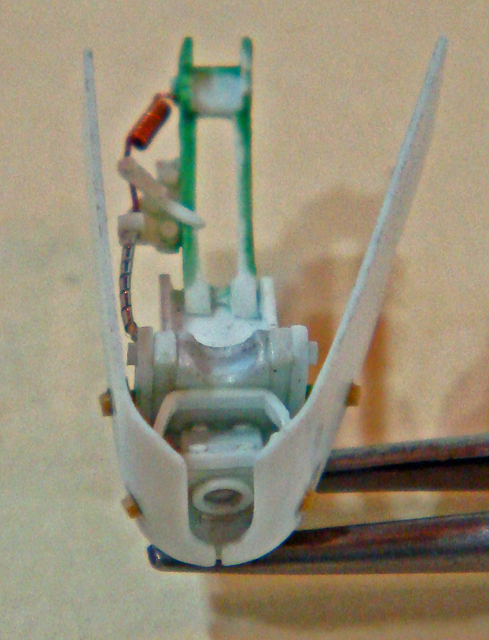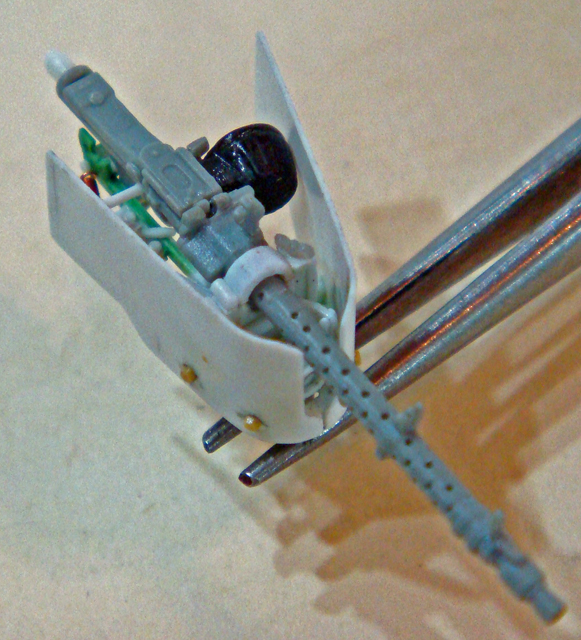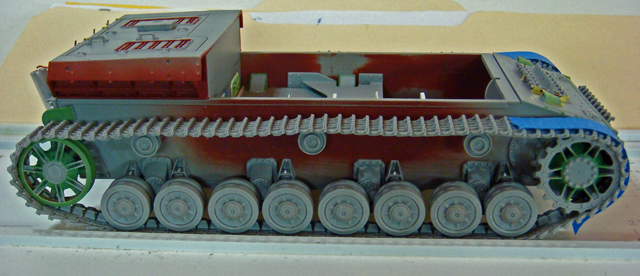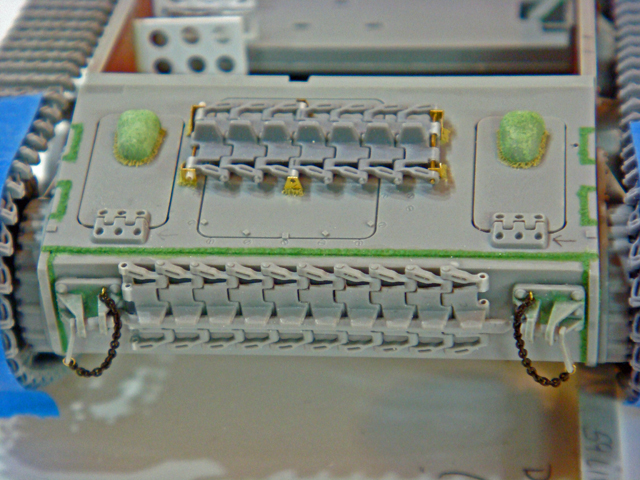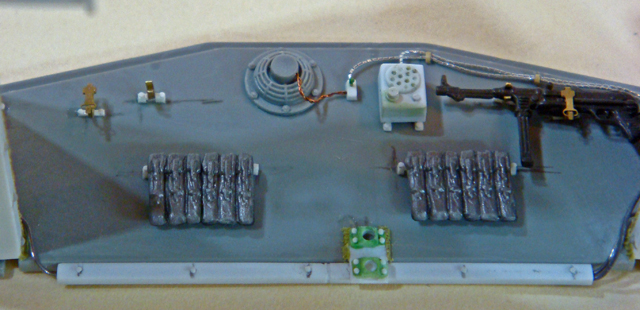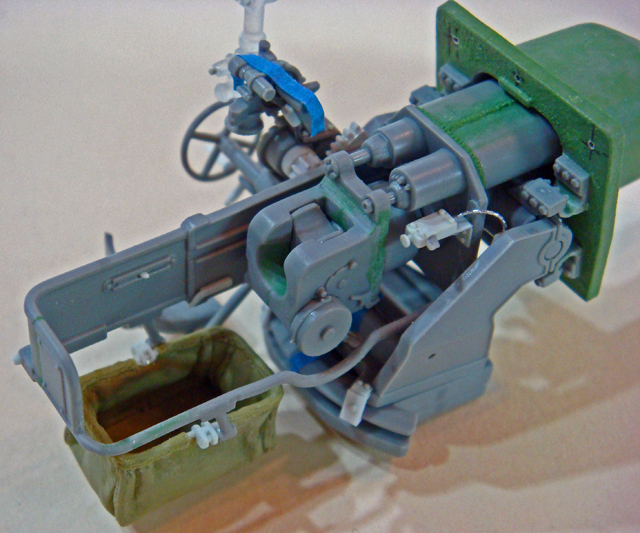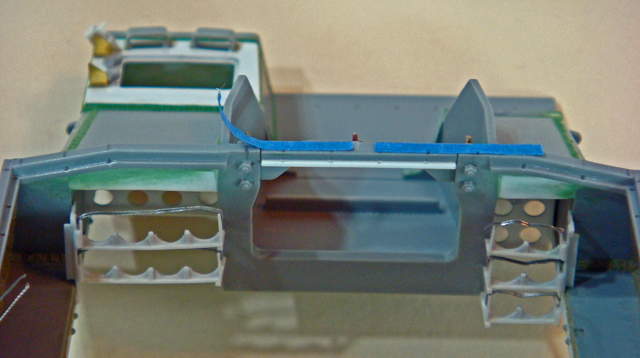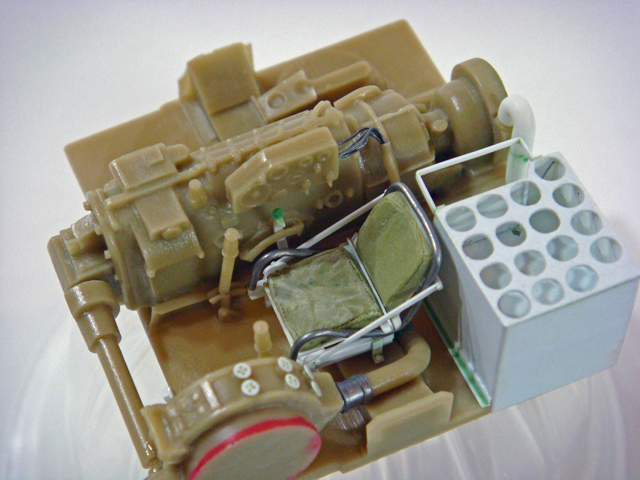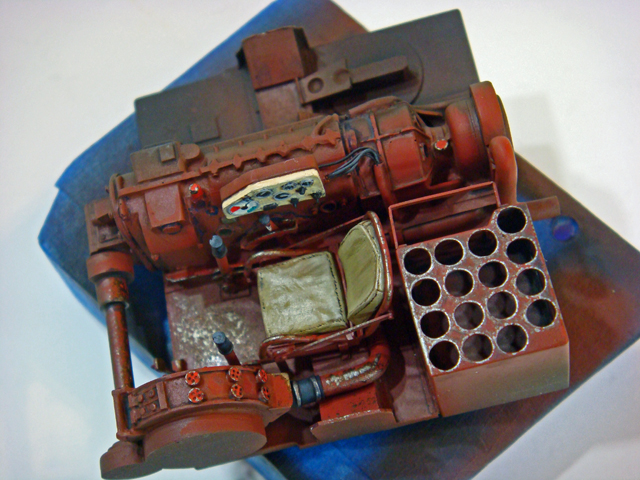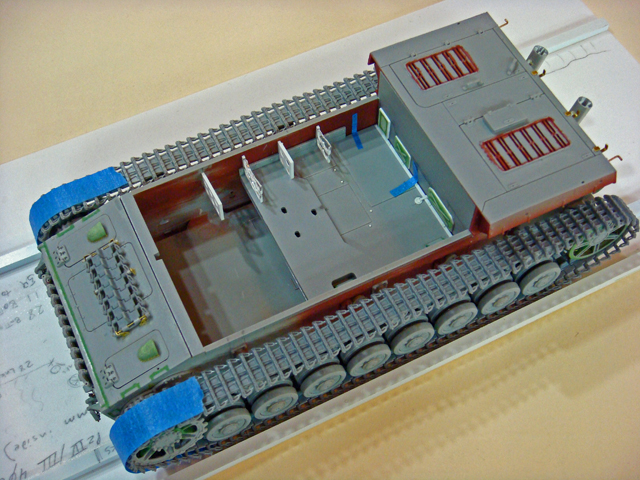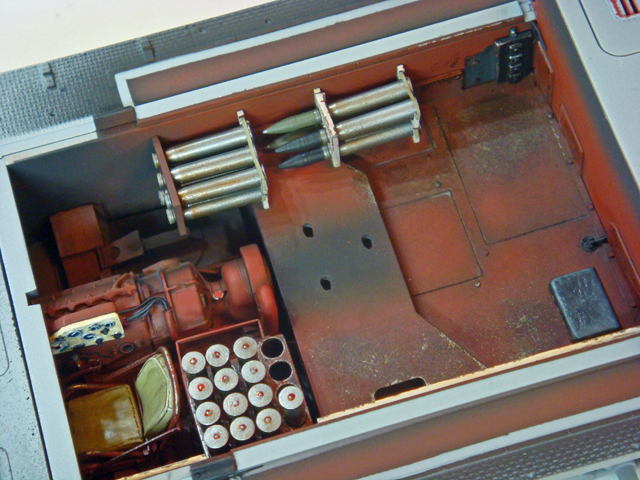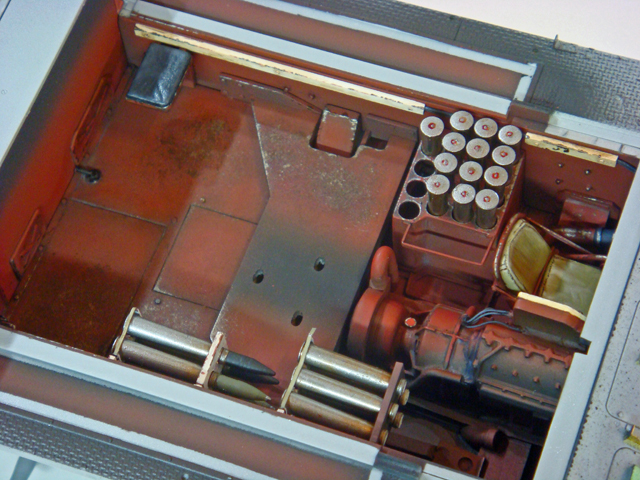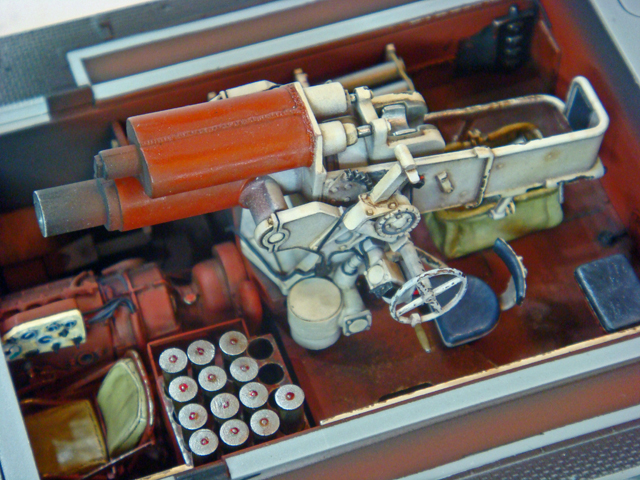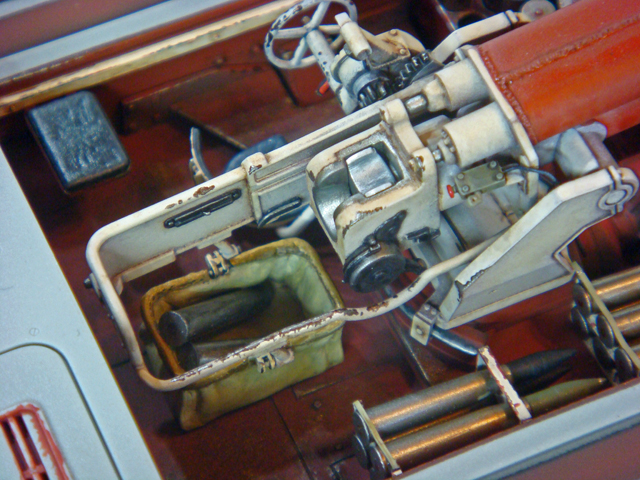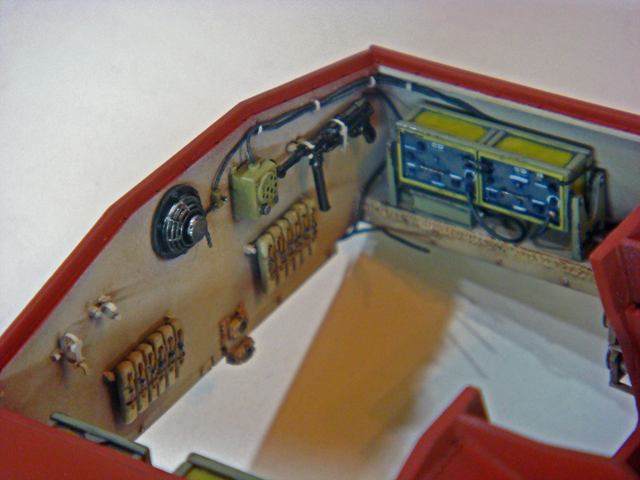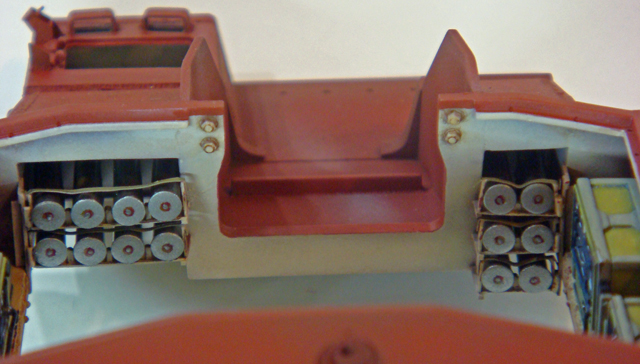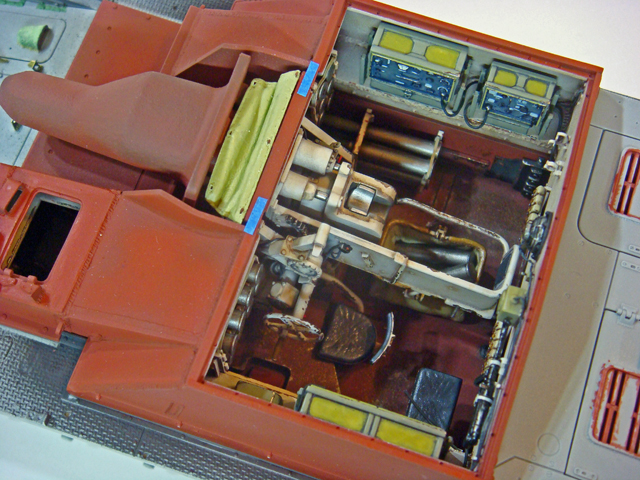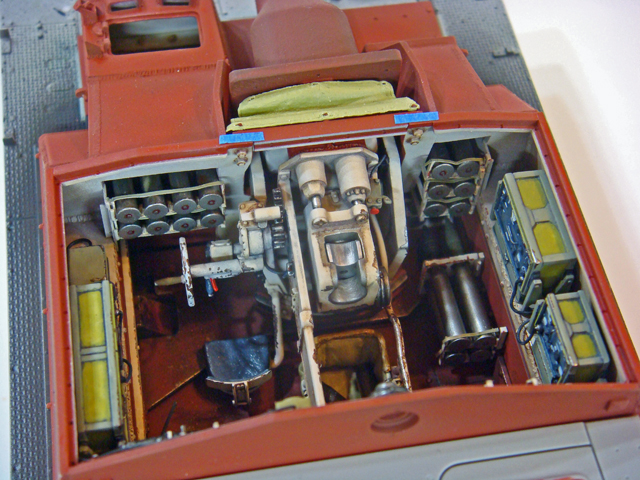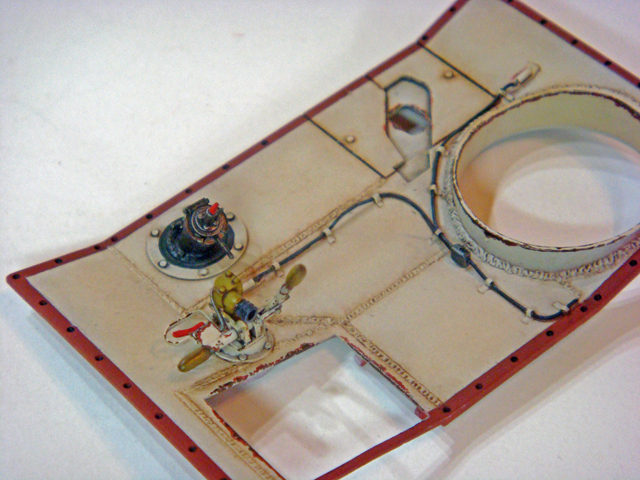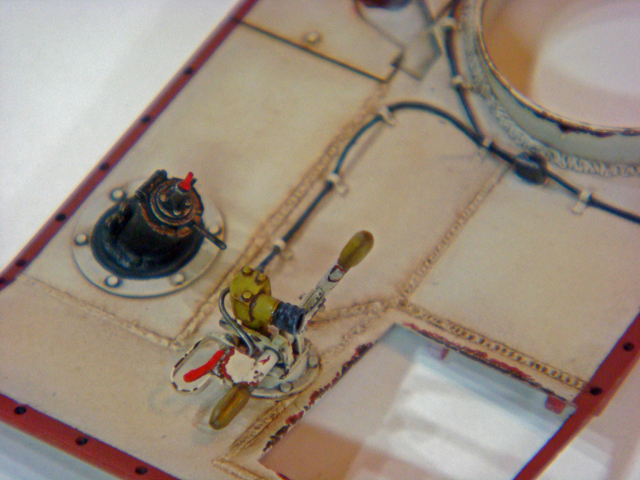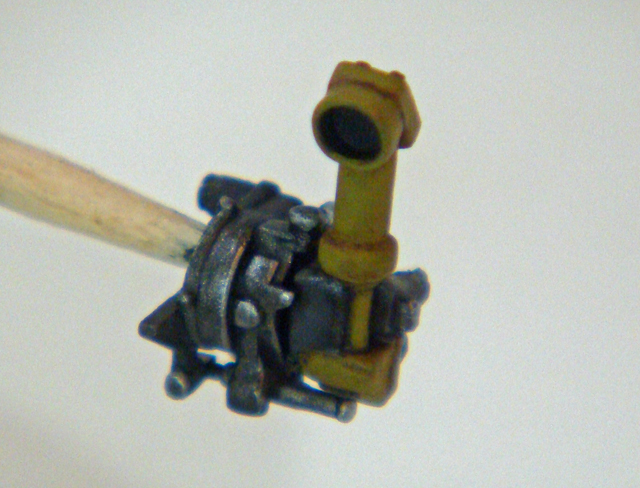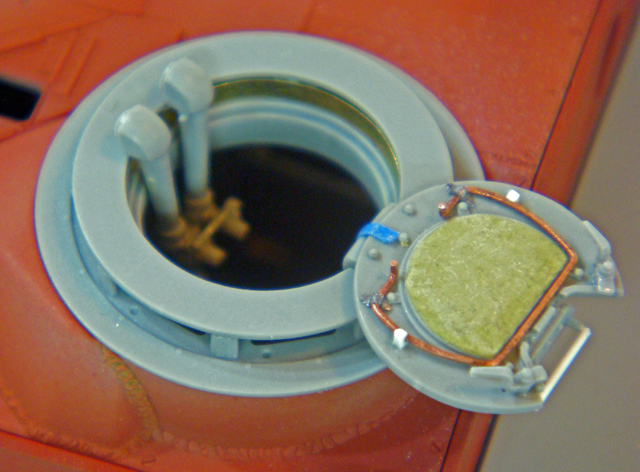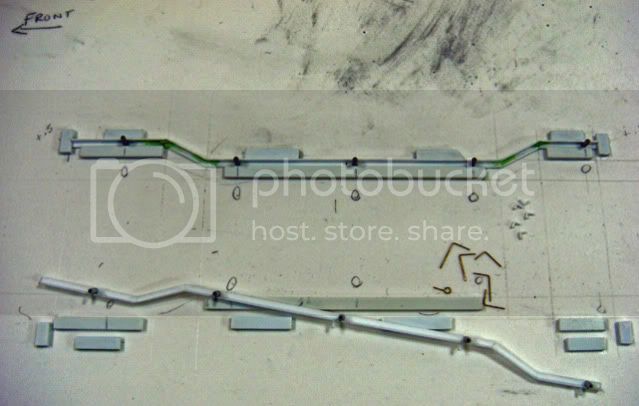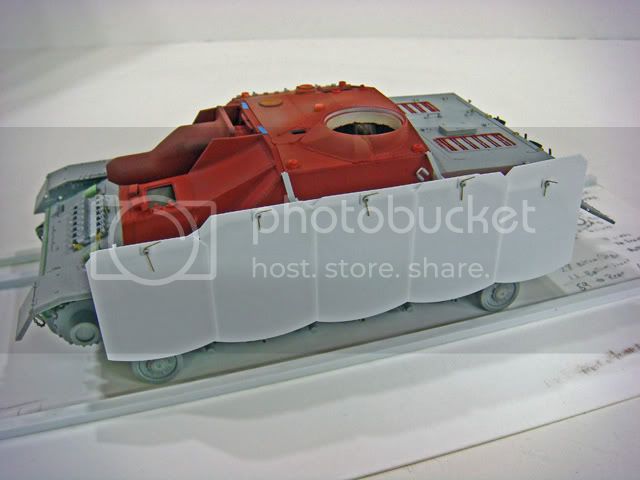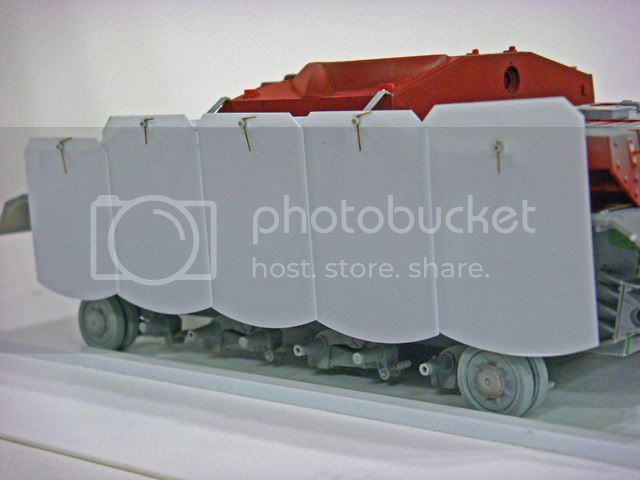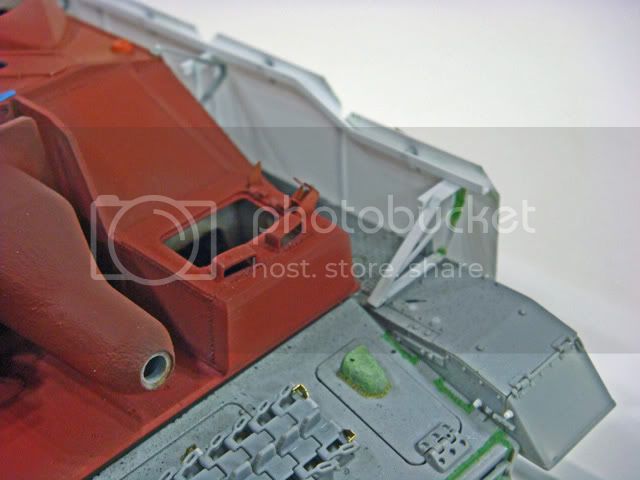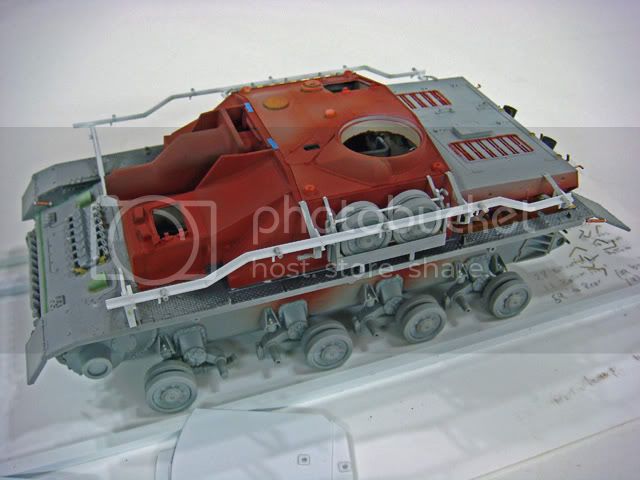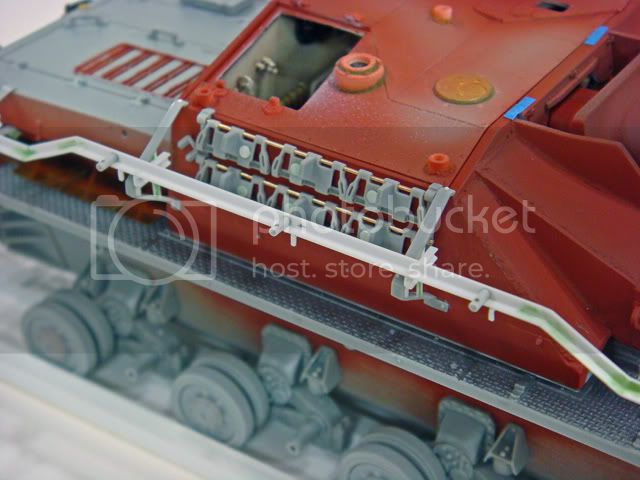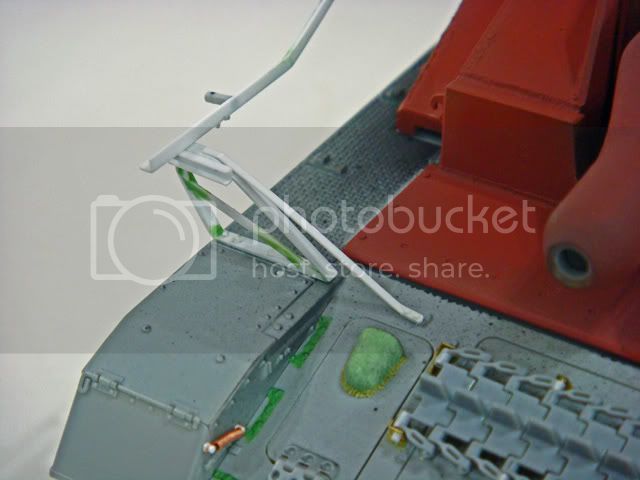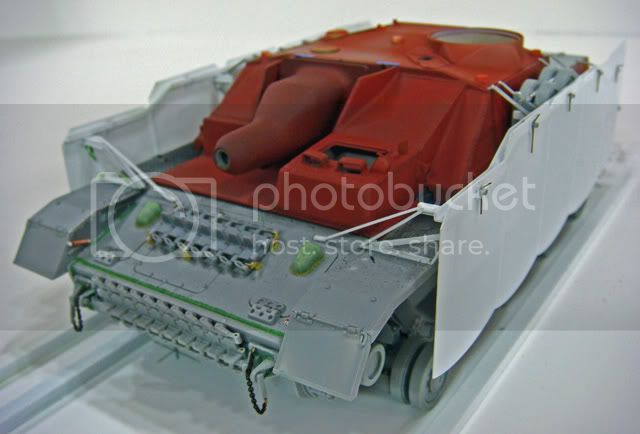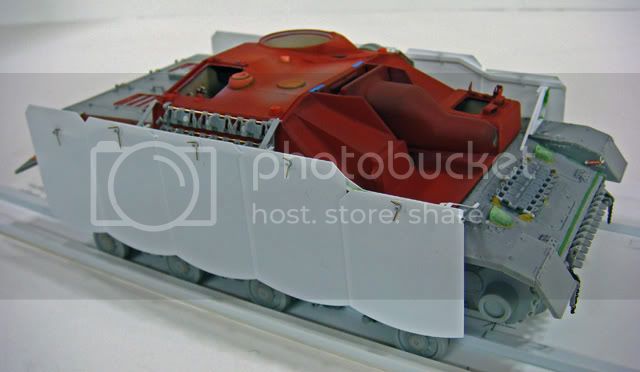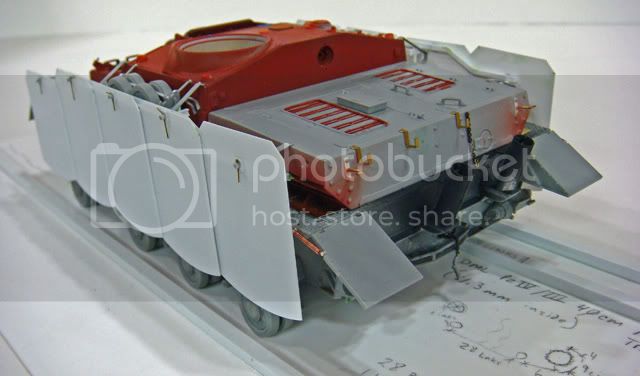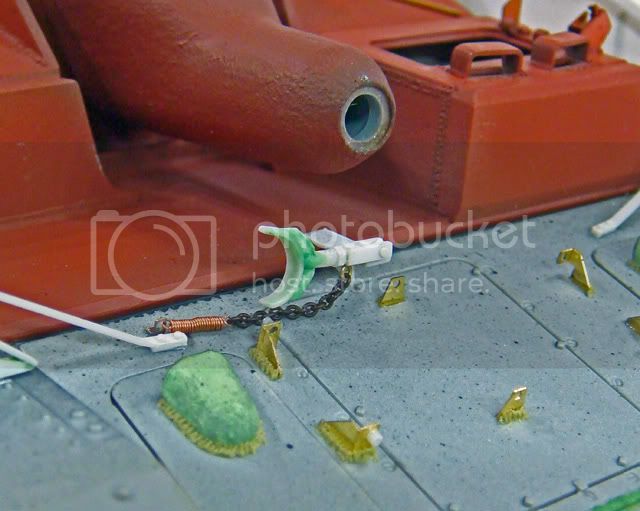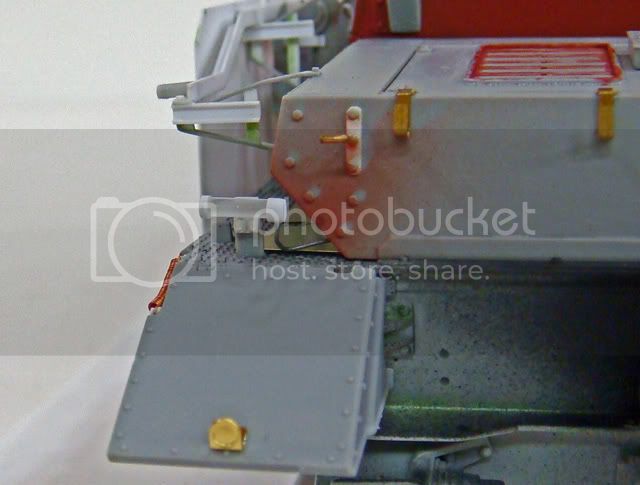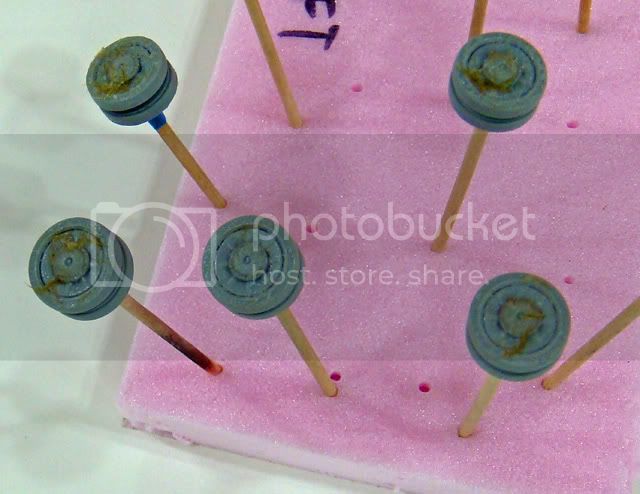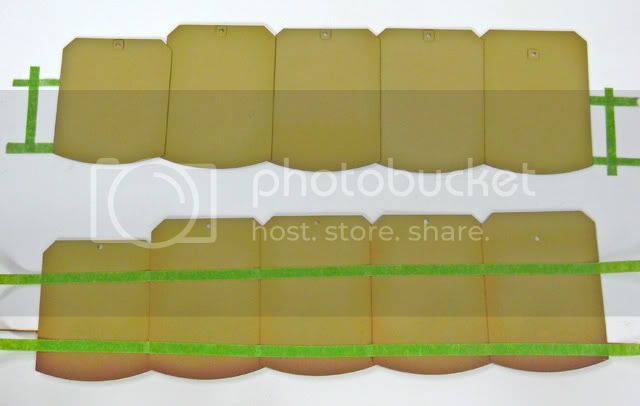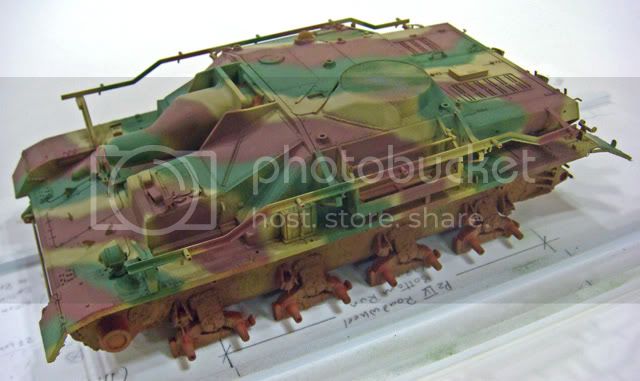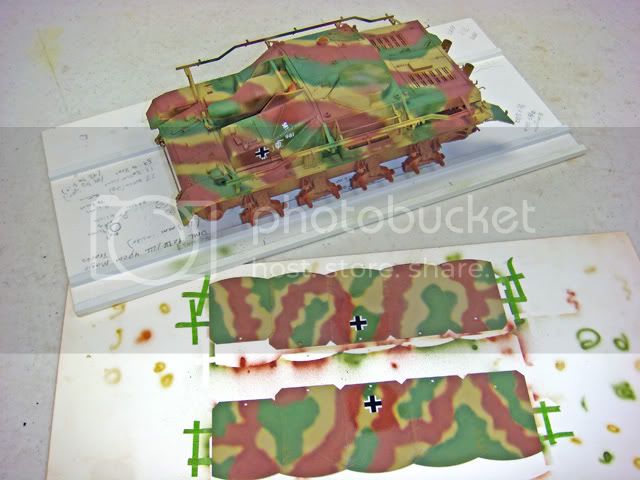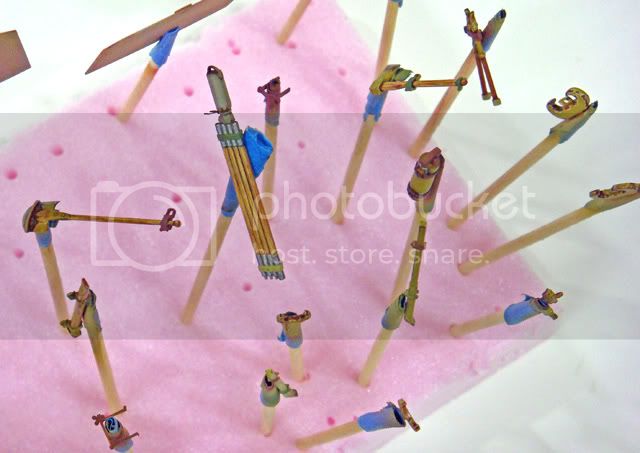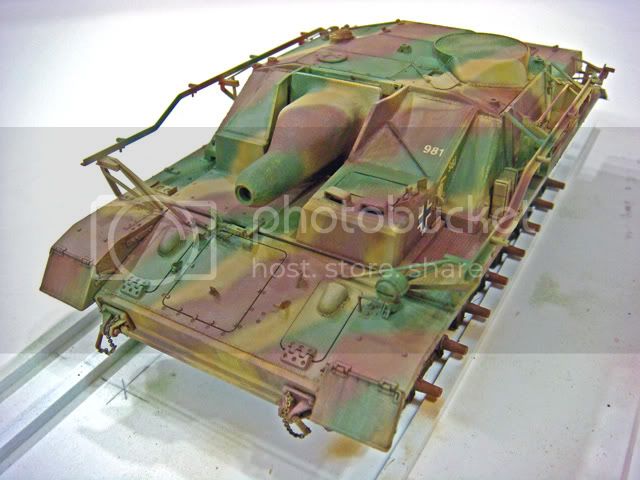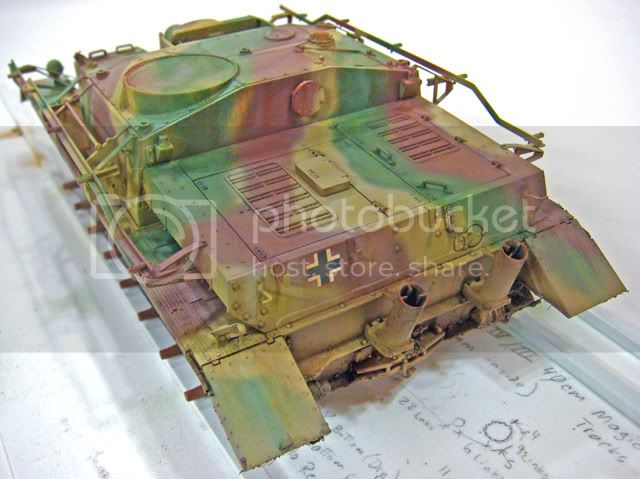Our AMPS club, AMPS Central SC, has been working on a group-build for the past few months, and I thought that I'd post some WIP photos and descriptions of my project.
The idea of the group-buld is for everyone interested to build the exact same kit and use that as a way to discuss tips and different building approaches. I have to give credit for the idea to the AMPS Atlanta chapter. They've been doing such builds for quite some time, and they were happy to share with us how they organize things - So, a big shout out to our friends there:
AMPS Atlanta Homepage
So, our project kit is the DML #6520, StuG IV sd.kfz. 167 Early. This is the kit that was recently re-released with molded on Zimmeritt. Out of the box (if you add the Zimmeritt) the kit represents one of the first 100 or so production vehicles, say up to about Feb '44. There is actually a front fender option that narrows this production window down to one of the very first 30 vehicles produced in Dec '43-Jan '44. The kit is very typical of newer DML offers - That is, it's very nice, has 40cm Late Magic Tracks and some PE and other metal enhancements (ex: die cut metal Schurtzen), and fewer than the usual number of mistakes or confusing instructions. Actually, the instruction problems are mostly with ommisions of information or explanations of options rather than actual mistakes.
The kit has been reviewed here on Armorama and other places, and as has been pointed out, the only real ommision to an accurate kit is the lack of Zimm which was put on all of the StuG IV's that could be built from this kit OOTB. The newer kit with the Zimm has also been reviewed, but about half of all StuG IV's were produced without Zimm. This change in production occured in Sep '44, and starting as early as Feb or Mar '44, there were other changes to the StuG IV that are not possible with the kit as boxed by DML. So, both kits, while very accurate, really are rather limited in their historical context.
I originally wanted to build a StuG IV perhaps in a Normandy setting, but wasn't really satisfied with the amount of information that I could find and verify on the units issued with them at that time and place. As my research continued, my choices of vehicle subjects kept getting later and later until I finally found some photos of StuG IV's with very interesting "swinging" Schurtzen that was hung from single-point pivots. If I wanted to build one of these, though, I'd have to modify the DML kit to include all of the up-dates and changes introduced into the production run.
The first change in design was a modified driver's hatch and periscope arrangement. This change was made pretty early in the production run, maybe as early as late Feb '44, so this was one of the the first changes I made on my kit:
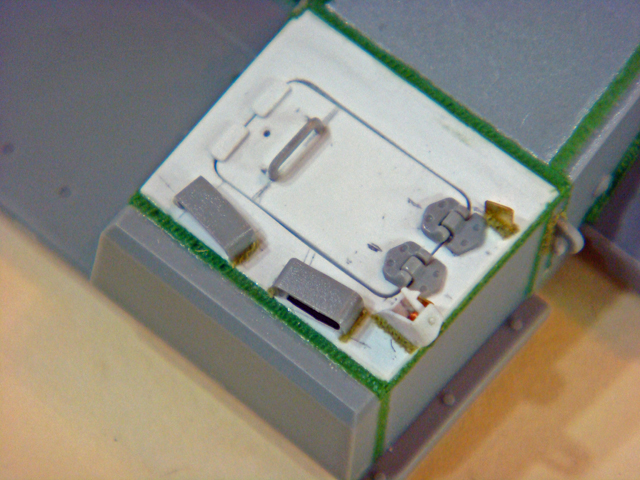
The new layout used a rectangular hatch and changed the angles on the periscopes. I sanded the kit hatch down to nothingness leaving the molded on hinges. I cut out the hatch opening and did the same with its details. The hinges were then transferred onto new parts cut from styrene sheet with the welds restored using Squadron Green Stuff and Milliput epoxy putty.
More to follow.






